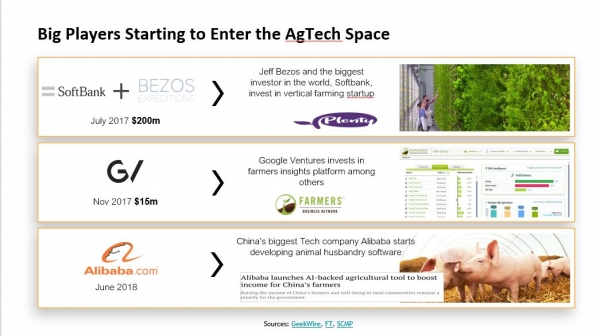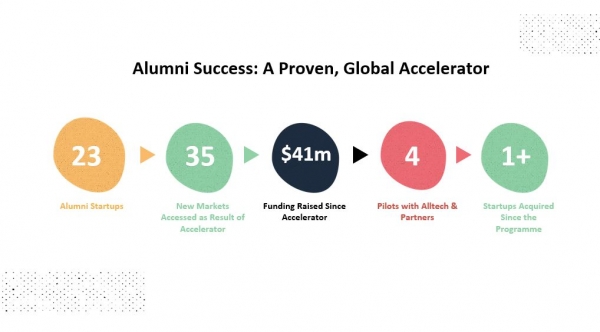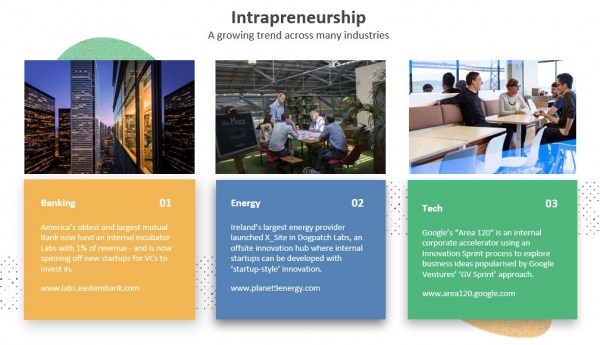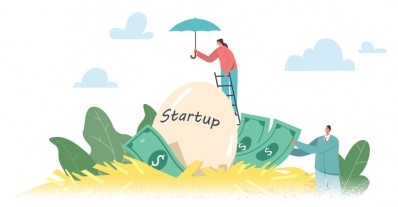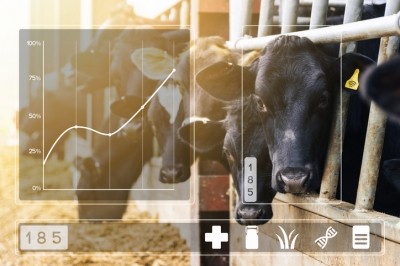Agriculture is the least digitized sector globally, so it is ripe for disruption, says Alltech

Since completing the program with Alltech, companies like Irish startup, MagGrow, have raised €3m and Indonesian startup, eFishery, have generated $3.5m in funding rounds.
Robert Walker, CEO of Keenan Systems, an Alltech agri-brand, and director of its accelerator program, spoke to journalists during a press tour of Alltech’s European Bioscience Centre in Dunboyne, Ireland, earlier this month. He provided insights about investments globally in AgTech, the accelerator trend, and how Alltech’s program fits into the innovation cycle at the company.
“Three years ago, we had an idea of why we were doing the accelerator, but it was kind of a work in progress; now, after three years, we have a clear direction about what we want to do going forward. The insights that we have got from the program have been quite significant, and it has contributed a lot to shaping the direction of the business for the future,” he said.
The AgTech space
A recent study by McKinsey & Company showed that agriculture is the least-digitized industry sector in the world: “There is a massive opportunity here, huge scope for disruption. If you think about agriculture, there are complicated supply chains with many players. Digital is perfect for that, but we have not embraced it yet,” said Walker.
Despite seeing a fourfold growth in investment since 2014, AgTech remains one of the most underinvested subsectors in the global startup ecosystem, he stressed.
Growth is happening though, he said. Just ahead of robotics and blockchain, there has been a lot of investments in AgTech and New Food. Indeed, there have been more AgTech funds created in the past three years than in the previous thirteen years, he continued.
And, in 2017, there was more than US$1.5bn invested in AgTech startups globally, while 2018 saw over $2bn ploughed into such businesses.
“That is actually very small [in the larger scale of things]. Uber’s last funding round generated US$8bn. But it gives you some idea of where we can go with AgTech,” said Walker.
Big players starting to enter the game
Which is the brand that is going to dominate the AgTech sector?
“I don’t think there is going to be one big brand, perhaps instead a few large ones.”
There are big players coming in already.
Jeff Bezos and Softbank, invested in vertical farming startup, Plenty, in July 2017. In November, that same year, Google Ventures invested in US farmer insights platform, Farmers Business Network, among others, while in summer 2018, Alibaba launched an AI-backed agricultural tool to boost income for China’s farmers.
The deals are getting bigger too, he said.
“And this year we also saw some noteworthy AgTech startup IPOs. Beyond Meat, of course, was the one that grabbed all the headlines. I think it is overvalued, but it is the only one, and, I think everyone wanted to jump into it.”
‘Innovation is thinking big’
Citing Robert Walcott, clinical professor of innovation & entrepreneurship, at the Kellogg School of Management at Northwestern University, Walker said modern businesses are in this tussle between exploring new territory and safeguarding what they have.
“Different departments are trying to protect what they have got against competitors, instead of going out and finding these new projects, new developments.”
Innovation is thinking big - delivering 10X, rather than 10%, he said, referencing Peter Diamandis, founder and chairman of the XPrize Foundation.
“There is no point in going out and finding something new that is only going to add a little to the bottom line, it has got to be transformative.”
Jack Welch, CEO, General Electric, said if the rate of change on the outside exceeds the rate of change on the inside, the end is near.
“If you think about agriculture currently, the rate of change outside is rapid, but the rate of change inside agribusiness companies is slow,” said Walker, talking also about how the banking landscape has changed significantly over the last 10 years, challenged by the rise of FinTech.
There is an urgent need for agribusiness companies to wake up and engage: “We are one of them, which is why we have this accelerator program running.”
Hike in number of AgTech focused accelerators
Over the last five years, the industry has seen a steady growth of AgTech focused accelerator programs, with 51 out there currently, he said.
“That is going to greatly enhance and change the shape of AgTech startups.”
Prior to those programs, there was very little support for fledging agriculture related businesses:
“As someone who has now worked with these startups, when they come in, they do need a lot of help. They normally have a great idea, and technically they are very good, but they [lack know-how in relation to] route to market, sales and marketing.”
He said rubbing shoulders, though, with startups is a great mentoring process for the Alltech experts as well, given the startups’ focus, their hunger, their creativity and agility.
To date, 23 companies have gone through the program and many have gone on to be quite successful, he said.
The reasons Alltech does it is to stay ahead of the curve, to have its finger on the pulse, to see the changes coming down the track: “We have seen a change in application type over the past three years. At the beginning, we saw a lot of companies coming in that were all about drones, hardware and surveillance, practical on-farm applications. This last year, there were lots of applications around integrating data, blockchain type approaches, it was about connecting the data to various players in the industry. I think that change indicates a certain amount of maturing in the segment,” said Walker.
Another reason it runs the program is to generate win-win opportunities and partnerships.
“We have not invested in any of the companies so far. We don’t want to become fund managers, to have a massive portfolio. It is not our business. But we do retain the right to invest in them, preferentially, and, frankly, I think a lot of these startups are more attractive to invest in one year later, once they have matured a little in the marketplace, there is a lot more certainty. It is more, for us, about collaborations in the marketplace, how we can help them go to new markets, get new customers, and how we can piggyback on some of their cool tech.”
A third reason Alltech does this is to take innovation to its customers, to rapidly advance their capabilities, helping to cement those existing relationships, he said.
Intrapreneurship
Along with working with startups in its accelerator program, Alltech has an incubator scheme to champion internal innovation.
A growing trend across many industries is intrapreneurship, enabling employees to cultivate their ideas and to think like entrepreneurs, he said. Alltech is doing the same, offering its staff the opportunity to join the accelerator program and build internal startups.
“The innovation process today is rapid; the old agribusiness model was this - someone had an idea and it would typically take five years to get it to market, registrations and marketing were put in place, and, when it reached market, the customers wanted it - but the problem today is that five years is too slow.”
Companies like Google or Facebook operate differently, said Walker, citing the publication, Exponential Organizations. Those technology firms can get through 10 projects in the same time that an idea from an agribusiness company like Syngenta is just getting started - some of those projects might fail, some might succeed, he said.
Also, very often, the innovation can happen at the edges of the company, he continued.
“Our team in Turkey is developing a unique way of delivering TMR to dairy cows – they did it on their own, they did not ask for permission. It seems to be going quite well. So, we need to find a way of incubating those ideas that are not sitting in the heart of the company, where they might get stifled.”
The ideas need to be developed away from the Mothership, he said, with teams working in a challenging, startup-like culture.
“This last year, in our incubator program, we incubated 11 projects that were internal, ideas that can be brought to market. One of those was from Keenan, we put it into the incubator to think about other ways of doing it, and then we went on to accelerate it.”
But there were other ideas in there as well that will likely come to market, he added.
